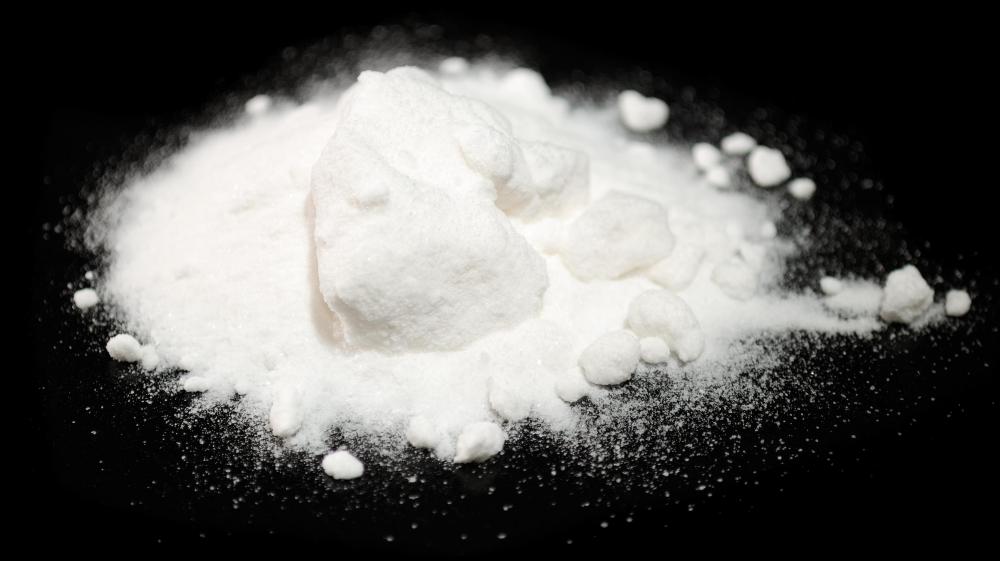At WiseGEEK, we're committed to delivering accurate, trustworthy information. Our expert-authored content is rigorously fact-checked and sourced from credible authorities. Discover how we uphold the highest standards in providing you with reliable knowledge.
What are the Most Common Toothpaste Ingredients?
The most common toothpaste ingredients include fluoride, baking soda, sodium laurel sulfate, hydrogen peroxide, hydrated silica, and additional thickeners and preservatives. Each ingredient serves a basic purpose and they all work together to provide optimum oral health. Many of these ingredients are found in virtually all toothpastes, while others, such as baking soda, are found in many options are not included as a basic ingredient in all formulas.
Perhaps one of the most common and most controversial toothpaste ingredients is fluoride. Studies have proven that the use of fluoride helps prevent tooth decay and cavities, and is essential in combating early signs of damage. It works by keeping the acid levels in the mouth down so that tooth enamel stays in tact. The acid is generally produced by bacteria during their metabolic processes.
Despite this information, there are some reports that fluoride is more harmful than useful. Some claim that fluoride can cause damage to the liver, kidneys, thyroid gland, and brain. These claims have not been fully proven.

Baking soda is also one of the most common toothpaste ingredients. It is used as a surfactant to help scrub away stains and plaque buildup. There have been no studies to confirm that baking soda helps prevent gum disease or tooth decay, but some people like the flavor and feel of baking soda toothpastes and are thus more likely to brush after every meal. The use of baking soda may also help prevent bad breath due to its odor reducing powers.

Another of the most common toothpaste ingredients is sodium laurel sulfate. This ingredient is primarily used as a surfactant, thanks to its ability to remove grime and buildup from nearly any surface. Some have claimed that it is carcinogenic, but no studies have shown this to be the case.
Hydrogen peroxide is one of the most powerful toothpaste ingredients, as it is able to kill bacteria as well as whiten teeth. Bottled peroxide is commonly used a mouthwash, as it is high effective as killing bad breath and decay causing germs. Added to toothpaste, it works with other ingredients to not only destroy bacteria but also to whiten teeth and refresh the breath.

Hydrated silica is also used in toothpaste along with other ingredients which give the paste its texture. Preservatives may be added, as well as thickening agents and flavoring. Various brands may use slightly different ingredients for these purposes, but they are common among most varieties and manufacturers.
AS FEATURED ON:
AS FEATURED ON:














Discussion Comments
@shell4life – Sure, you can. I've been doing this for years. I like using these two natural ingredients that are common in almost all toothpastes, because I feel this combination must be really effective.
You can get too much hydrogen peroxide, though. You need to use just a small amount when making the paste.
I use a quarter teaspoon of peroxide. I mix it with one teaspoon of baking soda, and I use it immediately. This will give you the most foaming action and the best moderately abrasive qualities.
Hydrogen peroxide is one of the main whitening toothpaste ingredients. I always use whitening toothpastes, even though they cost a little more than regular toothpaste, because I am paranoid about the slight yellow undertone to my teeth. I feel like everyone is staring at them, even though they are barely cream-colored.
I have also noticed that most teeth whitening strips and gels contain hydrogen peroxide. I used to use these strips, until they gave me shooting pains in my gums one day. I have a feeling the hydrogen peroxide was not to blame for this, though, because my toothpaste has never given me issues.
Does anyone here know if you can combine baking soda with hydrogen peroxide to make your own toothpaste? I would like to try this, but I don't want to cause a chemical explosion or anything. I just think it would be so much cheaper than buying the whitening toothpaste.
I remember my dentist pushing fluoride toothpaste when I was little. He also used his electric brush to apply fluoride to my teeth after a cleaning. It tasted yummy, like flavored children's vitamins.
Since it is supposed to prevent damage, I guess he felt strongly about little kids using it. They eat more sugar and take less care of their teeth than most adults, so fluoride would be important at that stage.
I go to a different dentist now that I am an adult, and he has not once mentioned fluoride. Maybe he feels that it is dangerous or just plain unnecessary.
I had never noticed that toothpastes contain sodium lauryl sulfate. That is the same ingredient in shampoo that serves as a detergent for your hair!
I have heard the issues surrounding sodium lauryl sulfate as a shampoo ingredient, and I would imagine putting it in your mouth would be even more of a concern. I know it probably hasn't been proven definitively, but I have read articles stating that it can contribute to breast cancer.
Since it is said to dry out your hair by dissolving the oils, I wonder if this is what makes my mouth feel so dry after brushing. I have to drink a lot of water to get rid of the dry mouth.
Post your comments